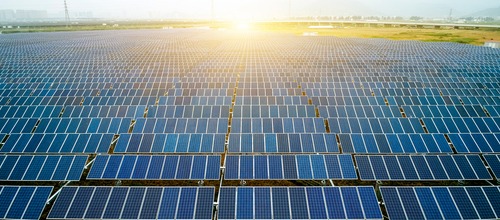EEI, NRDC, SEIA express shared goal to increase solar electricity

The Edison Electric Institute (EEI), the Natural Resources Defense Council (NRDC), and the Solar Energy Industries Association (SEIA) jointly applauded the benefits and prospects of solar power in comments submitted Feb. 15 to the National Association of Regulatory Utility Commissioners (NARUC).
“EEI, NRDC, and SEIA share the goal of achieving a dramatic increase in solar electricity production as a vital part of America’s clean energy transition,” the organizations wrote in their joint comments, which noted “the remarkable progress already achieved and anticipated.”
The groups jointly submitted their comments to NARUC, which held its 2022 Winter Policy Summit in Washington, D.C., this week, and addressed questions their leaderships said they frequently receive from policymakers and siting authorities.
Specifically, solar energy is expanding, according to their comments, and will continue to do so to meet net-zero carbon goals as a safe technology with low end-of-life impacts.
For instance, over the past eight years, more than half of the industry’s investments in new electricity generation have been in wind and solar generation resources, they said, while 40 percent of America’s electricity in 2020 came from carbon-free resources, including nuclear energy, hydropower, solar energy from roof-tops and large-scale projects, and wind.
“Electric power sector emissions were 40 percent below 2005 levels as of the end of 2020, their lowest level in more than 40 years, and reductions in sulfur and nitrogen emissions were greater still (80 percent to 90 percent),” they wrote.
And such reductions will continue as some 48 EEI member companies, which are investor-owned utilities, have announced forward-looking carbon reduction goals, more than half of which include a net-zero by 2050 or earlier equivalent goal.
Likewise, SEIA plans for solar energy from rooftops and large-scale projects to reach 30 percent of generation by 2030 as the U.S. transforms the electric grid and builds a robust clean energy economy, according to the comments.
During the last decade, in fact, the organizations said that solar has seen an average annual growth rate of 42 percent, due largely to “strong federal policies like the solar Investment Tax Credit, rapidly declining costs, and increasing demand across the private and public sector for clean electricity.”
“There are now more than 100 gigawatts (GW) of solar capacity installed nationwide, enough to power 18.9 million homes,” said the organizations.
As the U.S. solar industry has grown, so too has the need for a qualified workforce. The organizations pointed out that to reach the Biden administration’s clean energy target, the nation needs to hire more than 900,000 solar jobs.
“Now is the time to advance policy solutions that provide the long-term certainty that is needed in order to hire and train that workforce,” they said.
EEI, NRDC, and SEIA also pointed out other solar benefits, such as the declining cost to install solar — which has dropped by more than 70 percent over the last decade — and the fact that they are safe to handle, install, operate, decommission, reuse, and recycle.
At the same time, PV modules typically do not reach end-of-life until at least 40 years, wrote the organizations.
“We recommend a ‘circular economy’ approach that aims to reuse solar equipment where possible, or otherwise safely and appropriately recycle that equipment,” according to their comments. “For this to be successful, significant new infrastructure, logistics and processes need to be created, developed and further implemented in the many areas where solar will thrive. We will work together with other stakeholders to help make this happen.”
